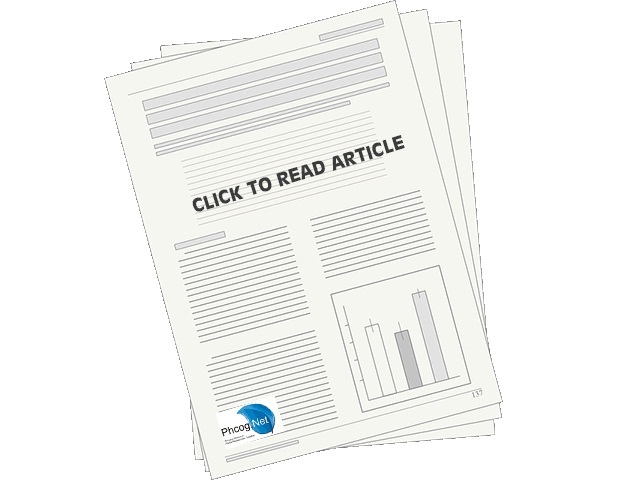Comparative Hypertestosteronemic Effects of the Erythropoietin and the U-74389G
DOI:
https://doi.org/10.5530/fra.2024.1.4Keywords:
Ischemia, Erythropoietin, U-74389G, Serum testosteronelevels, Reperfusion, Comparative hypertestosteronemiaAbstract
Background: This study is to find out in which direction two antioxidant promising molecules, the erythropoietin and the U-74389G, affect serum Testosterone (T) levels and what the magnitude of this alteration is. The posttreatment effects on serum Testosterone (T) levels were calculated, separately by each drug and afterwards a comparative calculation was following. Objectives: The estimation was extracted by the results of the 2 previous studies, each of which had estimated a certain influence, after the respective drug administration in an induced Ischemia-Reperfusion (IR) rat experiment. Materials and Methods: The 2 temporal experimental endpoints at which the serum T levels were measured were the 60th reperfusion min (for the 3 groups A, C and E) as well the 120th reperfusion min (for the other 3 groups B, D and F). Especially, the groups A and B were the placebo ones, the groups C and D were the post Epo; whereas the groups E and F were the post L administration. Results: The first previous study of Epo presented a non-significant hypertestosteronemic effect by 0.276%±0.272% (p-value=0.3006). Similarly, the second previous study of U-74389G presented also a non-significant hypertestosteronemic effect by 0.111%±0.179% (p-value=0.5245). The results of these 2 studies co-calculated as belonging to the same experimental setting, provided the outcome of L being just by 0.4046004 [0.4035126 - 0.4056911] less hypertestoteronemic than Epo (p-value=0.0000). Conclusion: The intrinsic antioxidant capacity of U-74389G ascribes just 0.4046004 [0.4035126 - 0.4056911] less hypertestoteronemic influence than Epo (p-value=0.0000).
Downloads
Metrics
References
Τsompos C, Panoulis C, Τοutouzas K, Triantafyllou A, ΖografosG, Papalois A. The effect of the antioxidant drug “U-74389G” on testosterone levels during ischemia reperfusion injury in rats. RJPT. 2016;2(1):1-3. DOI: asdpub.com/index.php/rjpt
Tsompos C, Panoulis C, Toutouzas K, Triantafyllou A, Zografos G, Papalois A. The Effect of Erythropoietin on Testosterone Levels During Ischemia Reperfusion Injury in Rats. ARS MedicaTomitana. 2016;4(22):264-9.
Moslemi F, Piudeh F, Hajian MR, Khodarahmi A, Nematbakhsh M. Testosterone and Zinc Supplementations on Renal Ischemia-Reperfusion Injury in Orchiectomized Rats. Int J Prev Med. 2019;19;10:125. DOI:10.4103/ijpvm.IJPVM_101_18
Ghimire A, Bisset ES, Howlett SE. Ischemia and reperfusion injury following cardioplegic arrest is attenuated by age and testosterone deficiency in male but not female mice. Biol Sex Differ. 2019; 23;10(1): 42. DOI:10.1186/s13293-019-0256-4
Fu L, Liu Y, Wang J, Sun Y, Zhang L, Wu T, et al. Cardio protection by Low-dose of Estrogen and Testosterone at the Physiological Ratio on Ovariectomized Rats During Ischemia/Reperfusion Injury. J Cardiovasc Pharmacol. 2017;70(2):87-93. DOI:10.1097 /FJC.0000000000000497
Seara FAC, Olivares EL, Nascimento JHM. Anabolic steroid excess and myocardial infarction: From ischemia to reperfusion injury. Steroids 2020;161:108660. DOI:10. 1016/j.steroids.2020.108660
Gholampour F, Mansourkhani MS, Owji SM. Amelioration of testicular damages in renal ischemia/reperfusion by berberine: An experimental study. Int J Reprod Biomed. 2019; 26;17(11): 799-806. DOI:10.18502/ijrm.v17i10.5488
Seara FAC, Barbosa RAQ, Santos MVN, Domingos AE, Monnerat G, Carvalho AB, et al. Paradoxical effect of testosterone supplementation therapy on cardiac ischemia/ reperfusion injury in aged rats. J Steroid Biochem Mol Biol. 2019;191:105335. DOI:10 .1016/j.jsbmb.2019.03.012
Noroozzadeh M, Raoufy MR, Yarandi RB, Shahrivar FF, Moghimi N, Tehrani FR. Cardiac function and tolerance to ischemia/reperfusion injury in a rat model of polycystic ovary syndrome during the postmenopausal period. Life Sci. 2020;262:118394. DOI:1 0.1016/j.lfs.2020.118394
HuZ, Jepps TA, Zhou L, Liu J, Li M, Abbott GW. Kcne4 deletion sex dependently inhibits the RISK pathway response and exacerbates hepatic ischemia-reperfusion injury in mice. Am J PhysiolRegulIntegr Comp Physiol. 2019; 316(5):R552-62. DOI:10 .1152/ajpregu.00251.2018
Noroozzadeh M, Raoufy MR, Yarandi RB, Shahrivar FF, Tehrani FR. The effects of prenatal androgen exposure on cardiac function and tolerance to ischemia/reperfusion injury in male and female rats during adulthood. Life Sci. 2019;15;229:251-60. DOI:10.101 6/j.lfs.2019.05.044
Gholami M, Abbaszadeh A, Baharvand P, Hasanvand A, Hasanvand A, Gharravi AM. Protective effects of persian honey, Apis mellifera MedaSkorikov on side effects of chemotherapy and ischemia/reperfusion induced testicular injury. J Complement Integr Med. 2018; 23;15(4). DOI:10.1515/jcim-2016-0035
Maldonado O, Ramos A, Guapillo M, Rivera J, Palma I, Gayosso IR, et al. Effects of chronic inhibition of Testosterone metabolism on cardiac remodeling after ischemia/ reperfusion-induced myocardial damage in gonadectomized rats. Biol Open. 2019; 13;8(5). DOI:10.1242/bio.041905
Sekerci CA, Tanidir Y, Sener TE, Sener G, Cevik O, Yarat A, et al. Effects of platelet-rich plasma against experimental ischemia/reperfusion injury in rat testis. J Pediatr Urol. 2017;13(3):317. DOI:10.1016/j.jpurol.2016.12.016
Abdel-Gaber SA, Mohammed RK, Refaie MMM. Mechanism mediating the protective effect of diacerein in ischemia-reperfusion-induced testicular injury in rats. Life Sciences. 2018;209(15):57-62 DOI:.org/10.1016/j.lfs.2018.07.060
Τsompos C, Panoulis C, Triantafyllou A, Ζografos CG, Gerakis E, Gerakis S, et al. Comparison of the Hypamylasemic Effects of Erythropoietin and U-74389G. J Bacteriol Mycol. 2020;7(4):1136.





